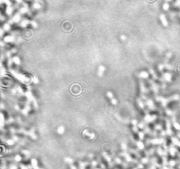This web site has been designed to give you some insight about Genetic Engineering, one of the hottest topics in science today. For those of you unfamiliar with genetic engineering, it is the alteration of an organism's genetic material to eliminate undesirable traits or to produce desirable new ones. Genetic engineering is used to increase plant and animal food production; to diagnose disease, improve medical treatment, and produce vaccines and other useful drugs; and to help dispose of industrial wastes. Recombinant DNA techniques have transformed genetic engineering in plant and animal food production, industry, and medicine. In most cases, DNA cannot be transferred directly from its original organism, known as the donor, to the recipient organism, known as the host. Instead, the donor DNA must be cut and recombined with a matching fragment of DNA from a vector. That is, an organism that can carry the donor DNA into the host. The host organism is often a rapidly multiplying microorganism such as a harmless bacterium, which serves as a factory where the recombined (recombinant) DNA can be cloned (that is, duplicated) in large quantities. The subsequently produced protein can then be removed from the host and used in humans, other animals, plants, bacteria or viruses. Genetic engineering has given us the power to alter the very basis of life on earth. Sound confusing? If you follow the links, you will learn about the history, the process, the benefits and the hazards of using genetic engineering. By the time you are through, you will be an expert. Remember to use the Glossary if you need help with some of the terms.
|

